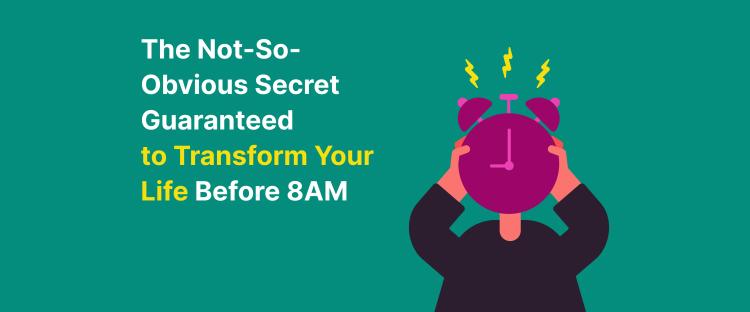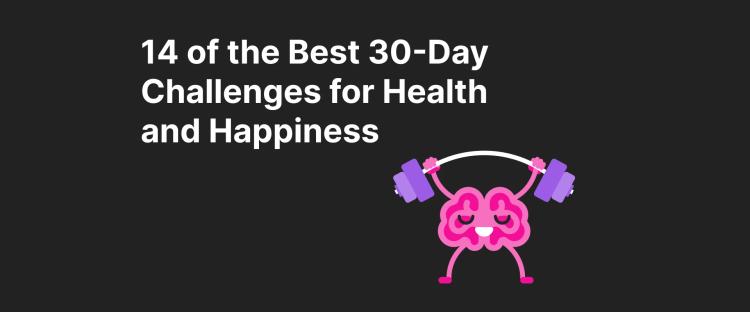The importance of creating space for happiness and well-being has deep roots in history. An old Finnish proverb wisely states,
"Happiness resides in the balance between too little and too much."
Each item we possess is linked to the level of consideration we give it; mindless hoarding and excessive accumulation can overwhelm us, turning into triggers for depression and headaches. That is what authors like Bea Johnson in 'Zero Waste Home,' Maria Kondo in 'The Life-Changing Magic of Tidying Up,' and others that we referenced while writing this article inspire us to embrace.
Hence, learning how to declutter your home and simplify your living spaces will help you gain control over the mental and emotional impacts of clutter. The Headway app has compiled an efficient list of tips, drawing on ideas from renowned authors to guide you in mastering the therapeutic skill of decluttering.
Decluttering and its benefits
Decluttering is the practice of carefully removing unnecessary items from a space to improve its functionality and ability to bring joy. It is not just about tidying up but rather a holistic strategy for simplifying life mentally and physically. Decluttering brings many benefits, including reduced stress and anxiety.
A clutter-free environment can contribute to a sense of calm and tranquility, leading to improved physical health. When fewer obstacles are in the home, the risk of accidents decreases.
Additionally, decluttering can enhance productivity. With a well-organized space, you can easily find what you need and focus on tasks without feeling overwhelmed by clutter. This can create a more peaceful and harmonious living environment, supporting your well-being.

How to start decluttering without feeling overwhelmed
It's crucial to take it step by step when decluttering to avoid feeling overwhelmed. You can start by gradually transforming your home management habits and committing to keeping them going consistently. If you're feeling overwhelmed or need help figuring out where to start, consider seeking help from a professional organizer. However, you can also opt for a popular DIY trend and attempt decluttering by yourself.
Popular decluttering rules and techniques that you may find helpful
1. The 20/20 rule: If an item costs less than $20 or takes less than 20 minutes to replace, you should dispose of it. This rule helps you let go of things you keep "just in case."
2. The 90/90 rule: Before deciding to keep an item, ask yourself if you have used it in the last 90 days and if you anticipate using it in the next 90 days.
3. The 50% rule: Keep storage areas around 50% full to prevent clutter.
4. The 12-12-12 rule: Identify and discard 12 items, give away 12 items, and put 12 items back where they belong. It can turn decluttering into a fun challenge.
5. The Core 4 method: It involves (1) Clearing Out (visually checking and evaluating every item), (2) Categorizing (by using labels), (3) Cutting Out (getting rid of items you don't use), and (4) Containing (grouping and storing similar items together for easier access).
6. The 80/20 rule (Pareto principle): You can apply the 80/20 rule to your chores by dedicating regular time to tidying up 20% of your belongings. This consistent effort helps maintain a tidy appearance overall and reduces the challenge of deep cleaning the remaining 80% of your house.
7. The 3-5 second rule: A brief 3-5 second interval allows you to carefully assess the item's practicality, sentimental value, and relevance to your daily life. It will make your de-junking process thoughtful and intentional.
8. The 5-year rule: Consider "reviewing" your belongings and recollecting if you've used each item in the last five years. If not, consider getting rid of them by selling or donating to a local charity shop.
9. The Project 333 challenge: Choose 33 items such as clothes, shoes, jewelry, and accessories. Pack away everything else and store it for the next 3 months. Your underwear, pajamas, in-house loungewear, and workout clothes are exempt.
10. The 5-D decluttering method: (1) Decide on a start date and prioritize it on your planner. Decide on a "zone" to work on, prepare tools, make a plan, and take "before" photos. (2) Do it by proceeding with sorting and storing, but avoid overdoing. (3) Deal with it: empty out or transport your sorted items, finding new homes for them following a list prepared beforehand. (4) Declare victory: After completing the decluttering process, take "after" photos, post a sign to commemorate your achievement, and celebrate your victory. (5) Develop new habits: the most challenging part is maintaining the decluttered zone, room, or home by following a new routine.
Staging sane living with a messy hoarder
Living with a hoarder and not having the option to move out can be an extremely challenging situation. It's essential to prioritize your mental well-being in such circumstances. Family members of individuals with hoarding disorder often experience a lot of distress and may feel isolated. If you find yourself in this situation, seeking support is crucial. When interacting with the hoarder, it's vital to show empathy by using respectful language and refraining from labeling their possessions as "trash."

It's also important to listen to the hoarder's feelings while establishing cleaning standards that both parties can agree upon. Creating a clean and organized space for yourself is essential for maintaining your sanity amidst the clutter. If someone is struggling with hoarding tendencies, it may be more beneficial to support them in exploring different storage solutions instead of pressuring them to declutter their space. Considering storage options can offer a temporary solution while the individual works through the challenges of letting go of specific items.
Decluttering tips for home and life in steps
To kickstart your decluttering journey, create a plan by scheduling which areas to declutter first. Everything you decide to keep must have a designated spot. You can maintain an organized home by setting aside regular time for more thorough cleanouts. As you progress, you'll be getting back a sense of control and empowerment over your living space. The following steps will help you keep going in the long term:
Step 1: Start with a clear plan
Feeling swamped by the clutter in your home is a common experience. However, with the help of a practical decluttering checklist, you can tackle the process one step at a time. Since the kitchen countertops get cluttered more often than other spaces, you can start from there. A plan to start with could be based on practically approved decluttering methods such as minimalism or any other that you would like to try and test its suitability for you personally - as long as you're happy with it, it is worth it to keep using it. In 'Goodbye, Things: The New Japanese Minimalism,' Fumio Sasaki describes the benefits of a minimalist lifestyle by highlighting its power to keep a person's mind "emotionally decluttered" as well:
"Minimalism is just the beginning. It's a tool. Once you've gone ahead and minimized, it's time to find out what those important things are."
Step 2: Room-by-room guide
In 'The Minimalist Home,' Joshua Becker highlights the value of the minimalist approach in getting rid of excess stuff. This guide is perfect for homeowners aspiring to embrace Danish hygge, the epitome of minimalism. Becker specifically outlines a "room-by-room approach" (from easiest to most difficult) that can assist readers in decluttering their living spaces, making their homes pleasant for the mind and soul:
"Minimalism isn't about removing the things you love. It's about removing the things that distract you from the things you love."

This approach suggests working in one room at a time to make sure you are not overwhelmed by deciding on a lot of stuff all at once. When you're taking on a decluttering project, it can bring more efficient results if you approach it methodically:
Begin with the kitchen: Areas like the pantry, kitchen cabinets, and countertops are usually the first to work on as they tend to be the most cluttered.
Proceed with the bedroom: A clean bedroom should be your first priority. It is actually an act of self-care, given that a neat and spacious room will boost your sound rest and sleep time. Begin with tackling the floor, as rooms usually have a lot of piles of clothes, books, and everything else. Arrange boxes like "Trash," "Donate," "Keep," and "Store," and make sure all those piles of stuff have a new "home" on your bookshelves, hangers, or linen closet.
Continue with the living room: Clear out any obstructions and begin the purging process. Begin by removing any items that are not used or cherished. Categorize the remaining items based on their similarities to ensure organization and easy access. Label storage containers and ensure that everything truly belongs in the living room. Remain open to continually enhancing the space's functionality.
Finish with the bathroom: Check out your medical cabinet for expired products and those you don't use regularly. Consider crafting a special file organizer for dryers and straighteners and attaching a magnetic strip for tweezers and bobby pins. Mason vintage jars are among the most popular options for storing small items like brushes. Find a proper place for laundry baskets as well.
Organize the storage room: Keep it in good condition by avoiding clutter from "unmade decisions" being the sole reason for storing some items.
Extra tip: To keep your digital space organized, just like the physical one, start by taking inventory of your files and folders to track what you have. Second, process, delete, or archive emails and files to keep only essential items. Third, organize folders logically to make it easier to access specific files. Fourth, create filters to minimize manual handling. Fifth, regularly declutter your desktop. Sixth, ensure your data is regularly backed up to prevent loss. Seventh, schedule digital breaks and set time limits on your device usage to maintain a healthy balance.
When applied regularly, methodological guidelines build up a person's goodwill to systematically declutter and mindfully apply storage ideas in their hard drives, clouds, and physical homes, ensuring that all big and small spaces are considered. Yet, while fighting for your whole house to be welcoming and tidy, it's crucial to set your personality-tailored pace, like interior designers do. In 'How to Keep House While Drowning: A Gentle Approach to Cleaning and Organizing,' KC Davis emphasizes that the list of chores will never end, so it's important to remember to breathe during and in between the decluttering sessions:
"You do not have to earn the right to rest, connect, or recreate. Unlearn the idea that care tasks must be completed before sitting down. Care tasks are a never-ending list; if you wait until everything is done to rest, you will never rest."
Step 3: Declutter with purpose
Decluttering with purpose involves aligning the process of eliminating unwanted items with the principles of minimalism or the Sustainable Development Goals (SDGs). When approaching the cleaning process from this perspective, incorporate eco-friendly decluttering tips such as:
Transforming unwanted items into something of superior value or quality through upcycling.
Choosing energy-efficient lighting to conserve energy.
Opting for reusable materials instead of plastics.
Being on the lookout for sustainable alternatives to everyday items.
Minimizing food waste by practicing mindful eating and paying attention to what and how you eat.
Adopting water-saving practices as part of a daily routine.

To master the art of decluttering with purpose, the Headway Team recommends 'Zero Waste Home: The Ultimate Guide to Simplifying Your Life by Reducing Your Waste' by Bea Johnson. The author promotes eco-friendly decluttering practices that positively shape the natural environment around us and motivate us to align our households with sustainable living values and principles. At the same time, the author makes it person-centered, specifying that all the decluttering efforts aren't just for nature but for our own productivity and appreciation of our lifestyle:
"What we did not truly use, need, and love had to go. This would become our motto for decluttering."
Step 4: Overcome emotional barriers
Choosing a method or set of rules crafted by specialists can be very helpful in mustering the emotional courage to let go of things. In this regard, the method developed by Marie Kondo ("the KonMari") serves as a unique approach to tidying up by category rather than room by room to encourage holding onto the items that spark joy instead of those that no longer serve a purpose:
"It is only when you put your house in order that your furniture and decorations come to life."
In her work, 'The Life-Changing Magic of Tidying Up,' Kondo also suggests regularly assessing the purpose of each item to create more space and gain a deeper appreciation for our lifestyle:
"A dramatic reorganization of the home causes correspondingly dramatic changes in lifestyle and perspective. It is life transforming."
"Our parents demanded that we clean up our rooms, but they too, had never been trained in how to do that. When it comes to tidying, we are all self-taught."
A decluttered home is obviously an emotionally beneficial environment. Numerous people who followed various popular organizer's advice have experienced it first-hand:
"Decluttered home is obviously an emotionally beneficial environment. Basically, "If everything is precious, nothing is precious." It took me so long to really absorb that but eventually it hit home when I had to move house several times."
"When I allow myself the time to make a good decision, I have never regretted decluttering an item. Taking a short amount of time to think it through can make all the difference."
Step 5: Maintain a clutter-free home

To maintain a clutter-free home over time, a person should develop daily habits and establish a consistent decluttering routine. In 'The Home Edit Life: The Complete Guide to Organizing Absolutely Everything at Work, at Home, and on the Go' by Clea Shearer and Joanna Teplin, readers can explore and implement a range of ongoing organization strategies that address every aspect of home and work life. This work ties in directly with a Netflix original series on organizing spaces for various purposes in the long-term perspective:
"Clutter is just postponed decisions."
"The key to maintaining an organized home is consistency."
The best strategies for decluttering a small apartment
Living in a small apartment can be challenging when managing belongings. One effective strategy to simplify this process is the "three-container" method. With this approach, you designate three containers for different purposes: one for the items you want to keep, another for the items you wish to donate, and a third for the items you want to discard. This systematic approach streamlines the process of evaluating and sorting through your possessions.
In addition to the three-container method, placing wastebaskets in every room is beneficial. This small but impactful step contributes significantly to maintaining a tidy living environment. When a room lacks a convenient way to dispose of trash, people may be inclined to leave it lying around, creating unnecessary clutter. Placing a wastebasket in each room and emptying it on a regular basis can prevent the accumulation of filled trash bags and keep your living spaces clean and organized.
What is death cleaning and why it's important
"Death cleaning" is a concept known as "döstädning" in Swedish, and it revolves around the idea of tidying and organizing your entire home (including the laundry room and storage spaces) to alleviate the burden on your loved ones after you pass away. The main principles of this practice involve:
Beginning the process early.
Careful evaluating and decluttering of your possessions.
Organizing the items that remain.
Ensuring that important information and financial matters run smoothly.
This proactive approach helps "streamline" your belongings and provides a sense of preparedness and organization for your eventual departure.
Decluttering and minimalism: Keep it going with Headway
When it comes to decluttering, the authors mentioned here agree that it's better to either "use it" or "lose it" while also considering sentimental value. To further develop this skill, delve into the minimalist lifestyle journey with the Headway Team. Since it's already autumn and the holiday season is slowly approaching, revisit the article 'Decluttering: What to Do with All the Mess after the Festivities' to remind yourself of efficient tips for happy post-Christmas decluttering in advance.





